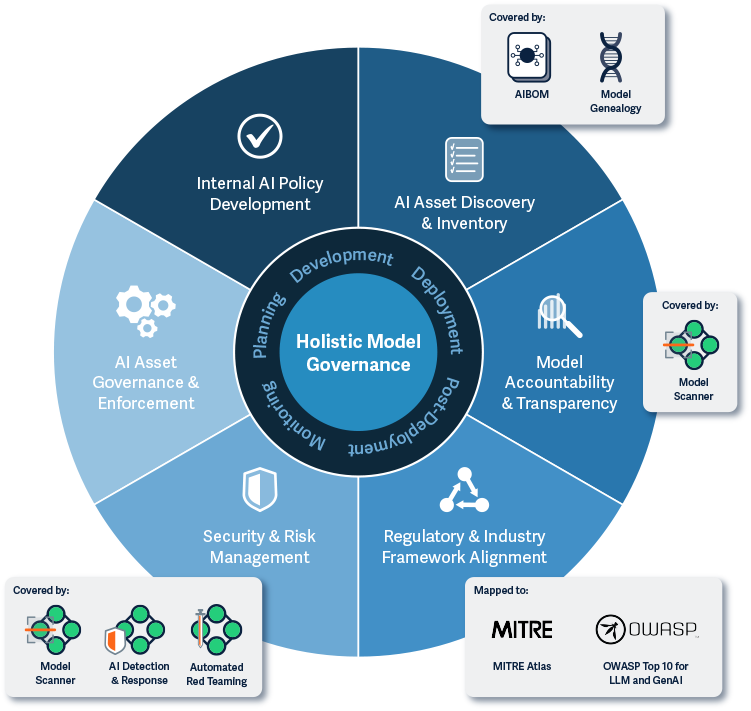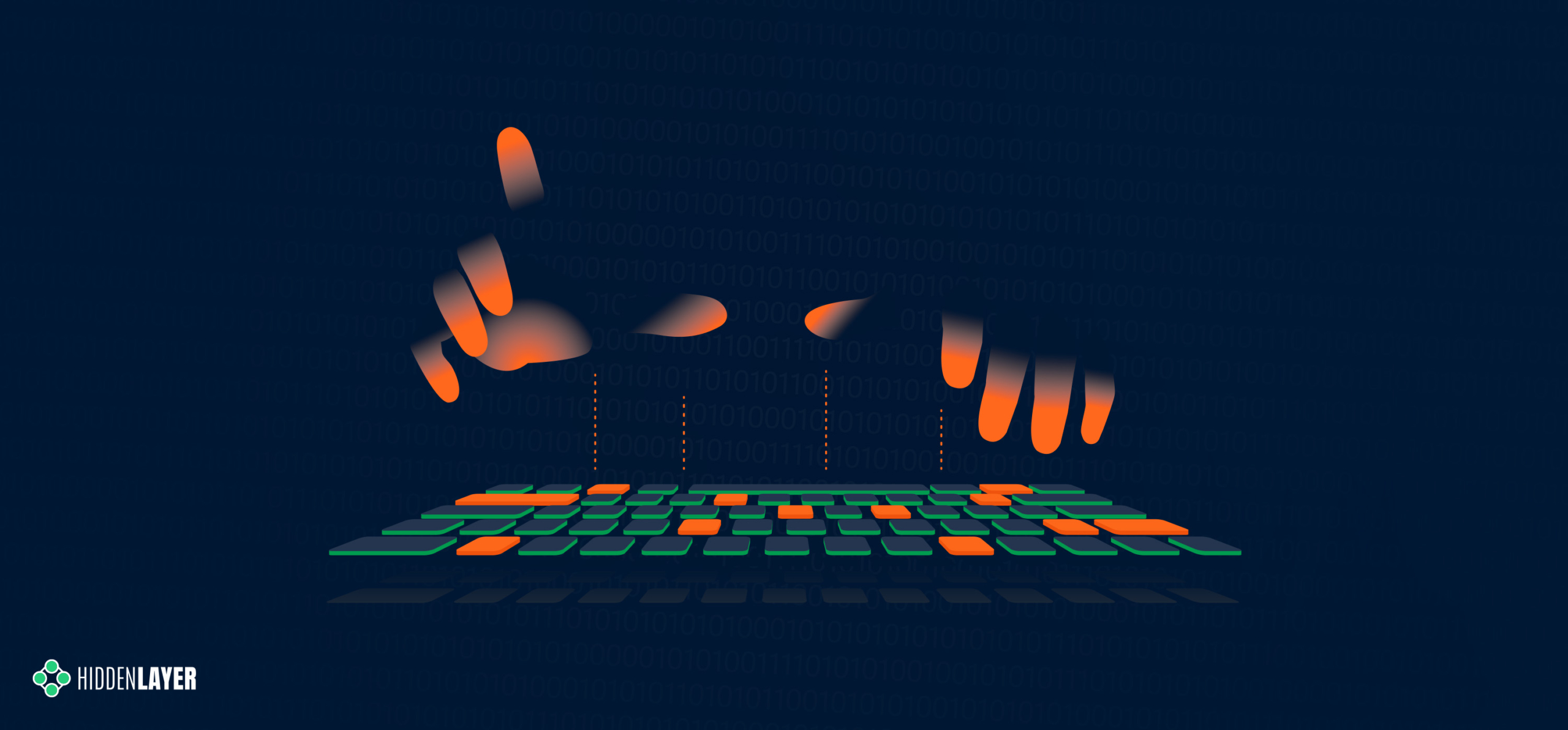Introduction
A large financial institution is preparing to deploy a new fraud detection model. However, progress has stalled.
Internal standards, regulatory requirements, and security reviews are slowing down deployment. Governance is interpreted differently across business units, and without centralized documentation or clear ownership, things come to a halt.
As regulatory scrutiny intensifies, particularly around explainability and risk management. Such governance challenges are increasingly pervasive in regulated sectors like finance, healthcare, and critical infrastructure. What’s needed is a governance framework that is holistic, integrated, and operational from day one.
Why AI Model Governance Matters
AI is rapidly becoming a foundational component of business operations across sectors. Without strong governance, organizations face increased risk, inefficiency, and reputational damage.
At HiddenLayer, our product approach is built to help customers adopt a comprehensive AI governance framework, one that enables innovation without sacrificing transparency, accountability, or control.
Pillars of Holistic Model Governance
We encourage customers to adopt a comprehensive approach to AI governance that spans the entire model lifecycle, from planning to ongoing monitoring.
- Internal AI Policy Development: Defines and enforces comprehensive internal policies for responsible AI development and use, including clear decision-making processes and designated accountable parties based on the company’s risk profile.
- AI Asset Discovery & Inventory: Automates the discovery and cataloging of AI systems across the organization, providing centralized visibility into models, datasets, and dependencies.
- Model Accountability & Transparency: Tracks model ownership, lineage, and usage context to support explainability, traceability, and responsible deployment across the organization.
- Regulatory & Industry Framework Alignment: Ensures adherence to internal policies and external industry and regulatory standards, supporting responsible AI use while reducing legal, operational, and reputational risk.
- Security & Risk Management: Identifies and mitigates vulnerabilities, misuse, and risks across environments during both pre-deployment and post-deployment phases.
- AI Asset Governance & Enforcement: Enables organizations to define, apply, and enforce custom governance, security, and compliance policies and controls across AI assets.
This point of view emphasizes that governance is not a one-time checklist but a continuous, cross-functional discipline requiring product, engineering, and security collaboration.
How HiddenLayer Enables Built-In Governance
By integrating governance into every stage of the model lifecycle, organizations can accelerate AI development while minimizing risk. HiddenLayer’s AIBOM and Model Genealogy capabilities play a critical role in enabling this shift and operationalizing model governance:
AIBOM
AIBOM is automatically generated for every scanned model and provides an auditable inventory of model components, datasets, and dependencies. Exported in an industry-standard format (CycloneDX), it enables organizations to trace supply chain risk, enforce licensing policies, and meet regulatory compliance requirements.
AIBOM helps reduce time from experimentation to production by offering instant, structured insight into a model’s components, streamlining reviews, audits, and compliance workflows that typically delay deployment.
Model Genealogy
Model Genealogy reveals the lineage and pedigree of AI models, enhancing explainability, compliance, and threat identification.
Model Genealogy takes model governance a step further by analyzing a model’s computational graph to reveal its architecture, origin, and intended function. This level of insight helps teams confirm whether a model is being used appropriately based on its purpose and identify potential risks inherited from upstream models. When paired with real-time vulnerability intelligence from Model Scanner, Model Genealogy empowers security and data science teams to identify hidden risks and ensure every model is aligned with its intended use before it reaches production.
Together, AIBOM and Model Genealogy provide organizations with the foundational tools to support accountability, making model governance actionable, scalable, and aligned with broader business and regulatory priorities.

Conclusion
Our product vision supports customers in building trustworthy, complete AI ecosystems, ones where every model is understandable, traceable, and governable. AIBOM and Genealogy are essential enablers of this vision, allowing customers to build and maintain secure and compliant AI systems.
These capabilities go beyond visibility, enabling teams to set governance policies. By embedding governance throughout the AI lifecycle, organizations can innovate faster while maintaining control. This ensures alignment with business goals, risk thresholds, and regulatory expectations, maximizing both efficiency and trust.




